As someone who loves hiking, I’ve always wondered if it’s an effective way to build glutes. After doing some research, I can confidently say that hiking is a great way to strengthen your glutes and lower body muscles. Not only is it a fun and enjoyable activity, but it can also provide a challenging workout that targets your glutes in different ways.
So, does hiking build glutes? The answer is yes! Hiking on uneven terrain, walking uphill, and engaging in eccentric contractions all work the glutes in different ways, leading to increased strength, endurance, and tone over time. Additionally, regular hiking can help to reduce the risk of injury by strengthening the glutes and stabilizing the pelvis. But what kinds of hiking are best for building glutes, and how much hiking do you need to do to see results? Let’s explore these questions and more in this article.
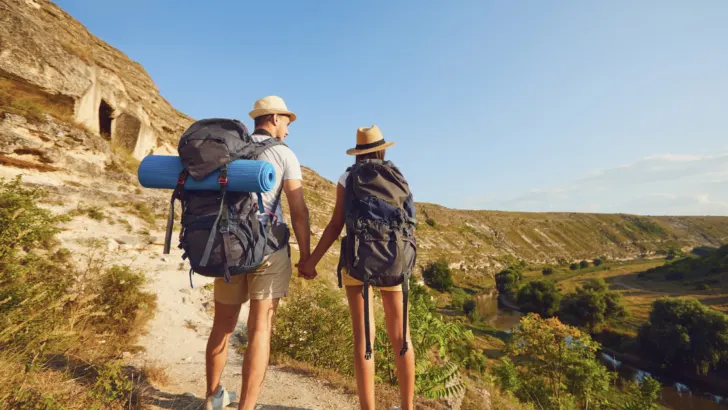
Does Hiking Build Glutes? Key Takeaways
- Hiking is an effective way to build glutes and lower body muscles.
- Hiking on uneven terrain, walking uphill, and engaging in eccentric contractions all work the glutes in different ways.
- Regular hiking can help to reduce the risk of injury by strengthening the glutes and stabilizing the pelvis.
Does Hiking Build Glutes?
As a part-time personal trainer who embraces both fitness and the wonders of the great outdoors, the question of whether hiking can contribute to glute development arises frequently. The answer, with unwavering enthusiasm, is a resounding YES! Hiking, with its captivating blend of physical exertion and natural beauty, stands as an exceptional catalyst for engaging your glutes and embarking on a journey towards a stronger, more toned booty.
In the realm of fitness, the glutes are revered as one of the body’s most powerful muscle groups. These muscles, comprising the gluteus maximus, medius, and minimus, play a pivotal role in various movements, from walking and running to squatting and jumping. Nurturing and strengthening the glutes not only enhances our athletic performance but also contributes to overall lower body stability and functionality.

As you venture onto the hiking trails, you embrace a workout that is uniquely tailored to activate and challenge your glutes. The uneven terrain, varying inclines, and natural obstacles demand the dynamic engagement of your lower body muscles, especially the glutes. With each step, the gluteus maximus takes center stage, propelling you forward and upward, while the gluteus medius and minimus stabilize your pelvis and support lateral movements, ensuring a balanced stride.
The act of hiking involves continuous and sustained glute activation, making it an excellent cardiovascular exercise that simultaneously targets these essential muscles. As you ascend steep slopes or conquer challenging ascents, the glutes work tirelessly to propel you upward, showcasing their strength and endurance.
Beyond the physical benefits, hiking in the great outdoors offers a unique and invigorating experience for the mind and soul. Surrounded by nature’s beauty, you immerse yourself in the rhythm of the trail, finding solace in each step and inspiration in the breathtaking vistas. This mental connection to the outdoors enhances the joy of the journey, creating a harmonious union of physical and mental well-being.
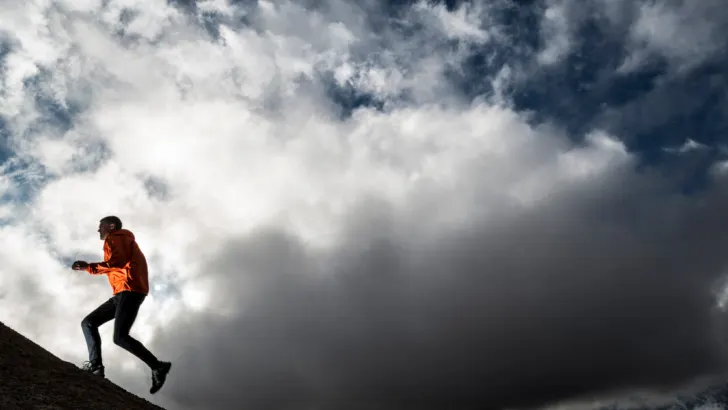
The journey towards a stronger, more toned booty is not solely about aesthetics; it is an ode to the power and resilience of the human body. With hiking as your chosen path, you tap into the beauty of nature’s gym, where the trails unfold as a canvas for your glutes to shine. Each hike becomes an opportunity to sculpt your glutes while embracing the serenity of the wilderness.
So, as a personal trainer and outdoor enthusiast, your passion for both fitness and nature converge on the trails, guiding others towards the transformative experience of glute-building through hiking. With each client, you embark on a shared adventure, inspiring them to unlock the potential within their glutes while basking in the wonders of the natural world. As the journey unfolds, the joy of witnessing their glute gains and a newfound appreciation for the great outdoors becomes a testament to the boundless possibilities that await those who embrace the hiking path to a stronger, more toned booty.
If you’re looking to build your glutes, hiking is a great option. However, it’s important to vary your hiking workouts and not just stick to flat terrain. Hiking uphill and on uneven terrain will help you work your glutes even more “Is Hiking an Aerobic Exercise: A Clear Answer?“.
How To Increase The Size And Strength Of Your Glutes
To unlock the full glute-building potential of hiking, mastering proper form and technique becomes the key to optimizing your workout. As you embark on the trails, channel your focus towards engaging your glutes with each step, particularly during uphill climbs and traversing uneven terrain. Embrace the art of mindful movement, and let the rhythm of your hike become a symphony of glute activation.
As you ascend uphill, visualize your glutes propelling you forward with each stride. Push off the ground using the strength of your gluteus maximus, allowing these powerful muscles to be the driving force behind your uphill conquests. Engaging your glutes during ascent not only enhances the effectiveness of your hike but also facilitates the development of these essential muscles.
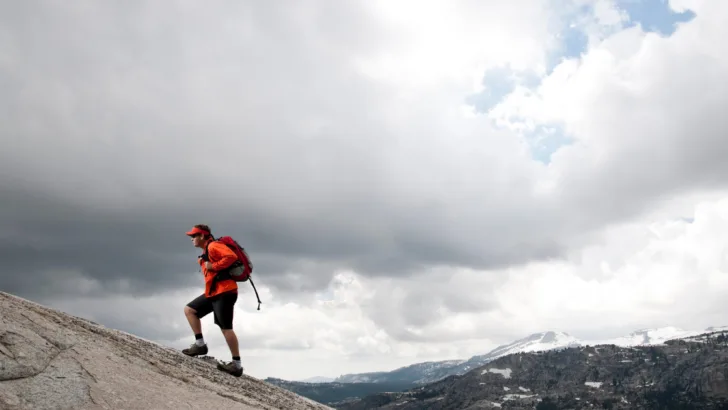
When navigating uneven terrain, pay close attention to the balance and stability of your pelvis. The gluteus medius and minimus play a crucial role in stabilizing your hips during lateral movements, ensuring that your body moves in a coordinated and controlled manner. Embrace the challenge of these natural obstacles as an opportunity to strengthen your glutes through stability and balance.
Taking long strides during your hike further accentuates the glute engagement. With each extended step, your glute muscles undergo a greater range of motion, allowing for deeper activation and recruitment of muscle fibers. As you stride confidently along the trail, envision your glutes stretching and contracting, sculpting your booty with every powerful move.
Incorporate intentional glute exercises into your hiking routine to supplement your efforts on the trails. Perform glute bridges, lunges, and squats as part of your warm-up or cool-down to target and activate the glute muscles directly. This targeted approach enhances the overall glute-building effect of hiking, making your booty-focused workout even more effective.

Maintain mindfulness throughout your hike, continuously assessing your form and technique. Keep your core engaged to support your lower back and maintain proper alignment. By cultivating this awareness, you foster a mind-muscle connection that intensifies the impact of your glute engagement, ensuring that every step becomes an opportunity to sculpt and strengthen your glutes.
As you immerse yourself in the beauty of nature’s gym, seize the chance to harness the glute-building benefits of hiking. With each ascent and descent, let your glutes rise to the occasion, embracing the challenge with purposeful engagement. The trails become your canvas, and the power of proper form and technique unveils the masterpiece of your glute development.
So, as you embark on your hiking adventure, let your glutes take the spotlight. With each step, embrace the opportunity to activate and sculpt these powerhouse muscles. In the embrace of nature’s embrace, let the mindful movements of your hike amplify the glute-building journey, elevating your hiking experience to new heights, and unveiling the transformative power that lies within proper form and technique.

In addition to hiking, there are other exercises you can incorporate into your routine to increase the size and strength of your glutes. Squats, lunges, and deadlifts are all effective strength training exercises that specifically target the glutes.
Does Hiking Build Glutes? Strength Training Exercises That Specifically Target The Glutes
Squats:
Squats, a timeless and iconic exercise, hold the power to work wonders for your glutes. Embrace this classic movement and let your glutes shine as you perform squats with precision and grace.
To begin, stand with your feet shoulder-width apart, finding a comfortable and stable stance. Engage your core muscles, drawing strength from your center to support your spine throughout the movement. With your chest held high and shoulders back, prepare to descend into the squat position.
Imagine lowering your body as if you were gracefully settling into an invisible chair. As you bend your knees, keep them in line with your toes, maintaining proper alignment and safeguarding against undue stress on your knees.

The beauty of squats lies in their versatility, and you have the freedom to customize your range of motion based on your fitness level and comfort. As you lower down, aim to achieve at least a 90-degree angle at your knees, allowing your thighs to become parallel to the ground. However, if you are new to squats or have mobility restrictions, a shallower range of motion is perfectly acceptable.
Throughout the movement, ensure that your weight is distributed evenly through your feet, with a slight emphasis on your heels. This distribution promotes stability and engages your glutes more effectively.
As you begin your ascent from the squat position, focus on activating your glute muscles. Imagine your glutes propelling you upwards with strength and power, leading the way as you rise back to a standing position. Feel the contraction of your glutes, cherishing the sensation of their involvement in the movement.

Maintain control and stability throughout each repetition, finding a rhythm that allows you to embrace the power of the squat while safeguarding against any potential strain or injury.
Whether you incorporate squats into your hiking preparation or strength training routine, the glute benefits are boundless. With each squat, your glutes are nourished with the attention and activation they deserve, paving the way for stronger, more sculpted gluteal muscles.
So, with the power of squats at your disposal, embark on a journey of glute transformation. As you perform this classic exercise with grace and intention, relish the connection with your glutes and celebrate their role as the driving force behind each squat. With every repetition, you forge a deeper bond with your glutes, unlocking their potential to flourish and evolve with every step you take.
Lunges:
Lunges, a powerful addition to your glute-strengthening arsenal, stand as another exceptional exercise for building glute strength. Embrace the dynamic movement of lunges, allowing your glutes to take center stage as you perform this transformative exercise.
To begin, find your footing with your feet hip-width apart. Prepare to take a step forward with one foot, leading the way into the lunge position. As you take the step, engage your core and maintain an upright posture, with your chest proud and shoulders relaxed.
Lower your body down by bending both knees, ensuring that the front knee is directly above your ankle, forming a 90-degree angle. As you descend, your back knee should gently lower toward the ground, creating a comfortable and stable lunge position.
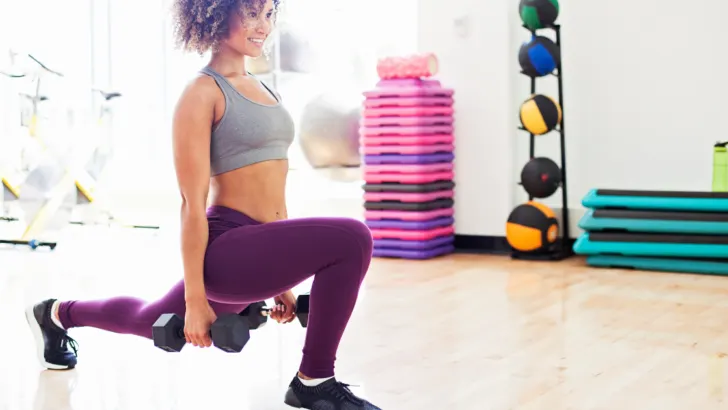
The beauty of lunges lies in their adaptability, and you can customize the depth of your lunge to suit your fitness level and flexibility. Aim for a 90-degree bend at both knees, allowing your front thigh to become parallel to the ground. However, if this range of motion is challenging, feel free to perform a shallower lunge until you gradually build strength and flexibility.
Throughout the movement, envision your glutes taking charge as you push back up to the starting position. Embrace the power of your glute muscles, utilizing them as the driving force to propel you upward.
As you return to the starting position, switch legs, stepping forward with the opposite foot to perform the lunge on the other side. Alternate between legs, creating a fluid and seamless movement pattern that fully engages your glutes.
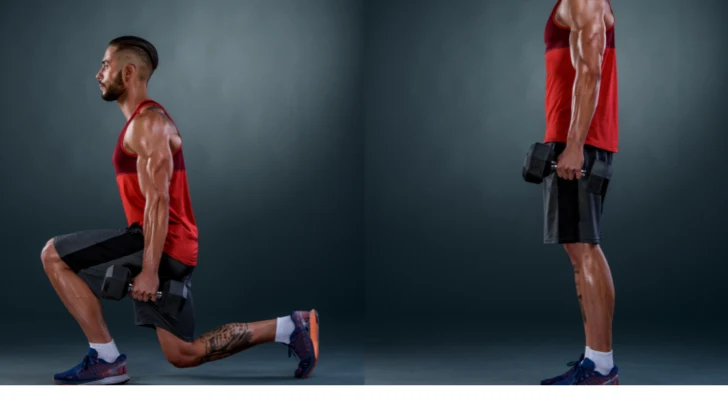
Maintain control and stability throughout each lunge, mindful of your form and technique. Focus on keeping your knees in proper alignment with your toes to safeguard against unnecessary strain.
Whether you incorporate lunges into your glute-focused workout routine or supplement your hiking preparation, the benefits for your glutes are immeasurable. With each lunge, your glutes rise to the occasion, embracing the challenge and becoming stronger with each repetition.
Deadlifts:
Deadlifts, the pinnacle of glute-engaging exercises, present a more advanced opportunity to foster serious glute strength. Embrace the challenge of deadlifts, where the power of your glutes takes center stage, propelling you toward a realm of unparalleled strength and development.
To begin, stand with your feet shoulder-width apart, ensuring that the barbell or dumbbell is placed in front of your body. Adopt a sturdy and balanced stance, allowing your feet to firmly grip the ground.
With your core engaged and your back held straight, hinge at the hips to lower the weight toward the ground. As you descend, visualize your glutes as the cornerstone of this movement, actively engaging them to support your lower back and stabilize your body.

Your grip on the barbell should be strong and secure, ready to lift the weight with confidence and control. Ensure that your shoulders are set back and your chest is proud, promoting proper alignment and safeguarding against strain.
As you begin to lift the weight, lead the movement with your glutes. Embrace the power of your gluteus maximus and hamstrings as they propel your body into an upright position. The glutes play a pivotal role in this phase of the deadlift, providing the strength and force necessary to elevate the weight.
Throughout the movement, maintain your focus on the engagement of your glutes. Feel the contraction and activation of these powerful muscles, cherishing their integral role in the deadlift.

As you lower the weight back down, keep your glutes engaged, ensuring controlled and deliberate movement. This eccentric phase of the deadlift further challenges your glutes, fostering their strength and resilience.
While deadlifts are indeed a more advanced exercise, they hold the potential for extraordinary glute development. As you master the intricacies of this movement, your glutes will flourish, becoming a symbol of power and determination.
Incorporate deadlifts into your strength training routine alongside your hiking endeavors, inviting your glutes to rise to new heights of strength and definition. Embrace the challenge, knowing that with each deadlift, your glutes become stronger, more sculpted, and primed for success.
Related Posts:
What Kinds Of Hiking Are Best For Building Glutes?
Is Hiking Uphill The Best Way To Build Your Glutes
When it comes to crafting sculpted glutes, look no further than the natural allure of uphill hiking. This invigorating activity stands as a remarkable way to ignite and fortify your glute muscles. As you embark on the ascent, a symphony of effort unfolds, pushing your body upward and propelling your glutes to the forefront of the journey.
Uphill hiking demands a significant amount of exertion, calling upon your glutes to embrace the challenge with unwavering strength. With each step, your glutes powerfully engage to push your body up the hill, propelling you forward with determination and purpose. The essence of uphill hiking lies in the increased resistance it offers, a gift that bestows remarkable benefits upon your glute muscles.
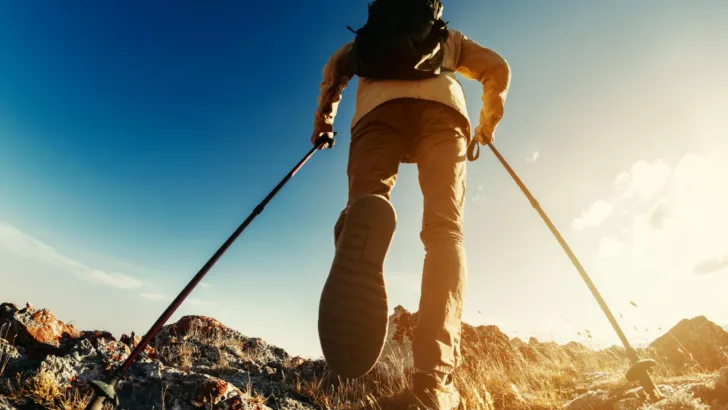
The ascent elevates the intensity of your workout, placing a profound emphasis on glute activation. As your glutes work tirelessly to propel you against gravity, they grow stronger, more defined, and ever more capable of conquering challenging trails.
In the realm of uphill hiking, the incline serves as the conductor, orchestrating a symphony of glute engagement. The steeper the incline, the more your glutes are called upon to meet the demands of the ascent. Seek trails that offer a good amount of elevation gain, allowing your glutes to flourish in the face of increased challenge.
During uphill hiking, your glutes emerge as the unsung heroes, diligently propelling you to new heights of strength and endurance. As you push through each incline, embrace the connection with your glutes, relishing their determination and resilience.
Is Hiking On Uneven Terrain Also A Good Way To Work Your Glutes?
Beyond the enchantment of uphill hiking, exploring the allure of uneven terrain unlocks another facet of glute-building splendor. Traverse the trails of uneven ground, where every step becomes a dynamic dance, and your glutes emerge as the guardians of stability and balance.
As you venture into the realm of uneven terrain, your glutes seize the opportunity to shine as they embrace the challenge of keeping you stable and centered. The undulating trails, adorned with rocks, roots, and various obstacles, demand your glutes to step up and down or move side to side with grace and strength.
Walking on uneven ground magnifies the engagement of your glutes, intensifying their efforts to maintain balance and harmony with the terrain. The multifaceted nature of hiking on uneven terrain ensures that your glutes are constantly active, sculpting and toning with each step.
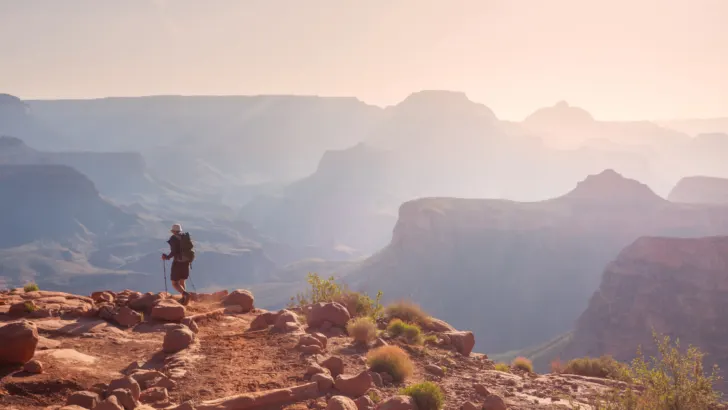
While flat terrain hiking has its benefits, the magic of glute activation truly blooms amidst the challenges of uphill or uneven terrain. In the world of glute-targeting, uphill and uneven hiking stand as the virtuosos, creating symphonies of strength and beauty within your gluteal muscles.
As you traverse the trails of uneven terrain, bask in the connection with your glutes, savoring their unwavering dedication to keeping you steady and strong. Each step becomes a testament to the versatility and resilience of your glutes, propelling you toward a world of glute empowerment.
Overall, hiking is a great way to build glutes while also getting outside and enjoying nature. Whether you prefer uphill or uneven terrain, incorporating hiking into your fitness routine can help you achieve your glute-building goals.
How Much Hiking Do You Need To Do To Build Glutes?
When it comes to building glutes through hiking, the amount of hiking you need to do depends on various factors such as your current fitness level, the intensity of the hike, and the frequency of your hiking routine. However, here are a few things to keep in mind:
Where To Start When You Are New To Hiking
For those venturing into the world of hiking for the first time, a measured approach is key to a successful and enjoyable journey. Embrace the notion of starting slowly and gradually escalating the challenge to build endurance and strength in your glutes and legs, while safeguarding against unnecessary strain.
As a novice hiker, consider commencing with shorter hikes on flat terrain. This gentle introduction allows your body to acclimate to the joys of hiking without overwhelming your muscles and joints. With each step, your glutes and legs begin to form a connection with the terrain, embracing the beauty of the hiking experience.
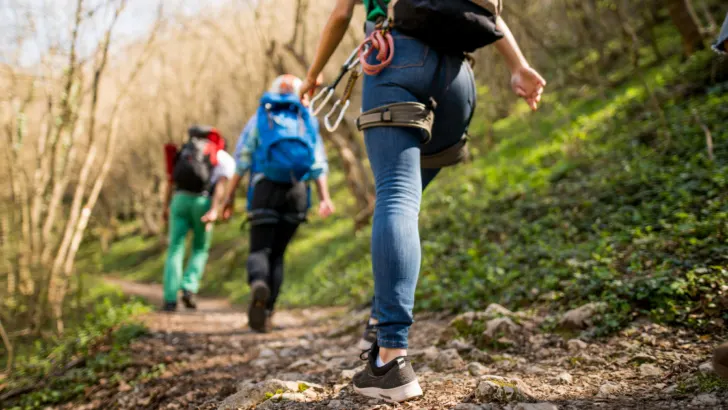
As your comfort and confidence grow, steadily increase the distance and elevation of your hikes. With each progressive outing, you embark on a journey of physical growth and empowerment. The incremental escalation serves as the stepping stone to your glute and leg development, paving the way to newfound strength and stamina.
The process of gradually intensifying your hikes serves a dual purpose. Firstly, it prevents your body from experiencing an abrupt and overwhelming surge in demand, reducing the risk of injuries and allowing you to progress at a pace that feels comfortable. Secondly, it fosters a sense of accomplishment as you witness your ability to conquer longer and more challenging trails.
In this progressive journey of glute and leg development, remember to listen to your body and be mindful of any signs of fatigue or strain. Honoring your body’s cues ensures that your hiking experiences remain joyful and sustainable, enabling you to flourish on the trails for years to come.
How Long Does It Take To Build A Big, Strong Butt
The journey towards building a big, strong butt through hiking is influenced by a variety of factors that are unique to each individual. Your current fitness level, the intensity of your hikes, and the frequency of your hiking routine all play a role in shaping the timeline of your glute-building endeavor. With unwavering dedication and consistency, you can witness the emergence of results in as little as a few weeks.
To embark on the path of glute empowerment through hiking, consider integrating hiking sessions into your weekly routine with purpose and determination. Aim to hike at least 3-4 times a week, dedicating 30-60 minutes to each session at a moderate to high intensity. As you traverse the trails, your glutes and legs come alive, embracing the challenge and rising to new levels of strength and endurance.
With each progressive hike, you begin to lay the foundation for a bigger, stronger butt. The dynamic and rhythmic nature of hiking nurtures your glutes, sculpting and toning them with every step forward. The journey unfolds with each stride, propelling you towards a world of glute transformation.

While hiking lays the groundwork for glute development, remember that variety is the spice of fitness. Complement your hiking workouts with other glute-targeting exercises like squats, lunges, and deadlifts. These strength training exercises enhance the impact of your hiking routine, fostering balanced and comprehensive glute gains.
By incorporating a diverse array of exercises, you ensure that your glutes receive a well-rounded and complete workout, contributing to their overall growth and strength.
As you persist on your glute-building journey, celebrate every small triumph along the way. Embrace the beauty of consistent effort, knowing that with each hike, your glutes and legs grow stronger, and your butt becomes a testament to your commitment to physical empowerment.
Overall, hiking is a great way to build glutes and improve overall fitness. By starting slowly and gradually increasing the intensity and frequency of your hikes, you can achieve a bigger, stronger butt in no time.
Here Are Some Additional Tips For Building Glutes While Hiking
In addition to hiking, there are some other things you can do to build your glutes while you’re on the trail. Here are a few tips:
- Use a backpack: Carrying a backpack while hiking can help build your glutes. Make sure to use a backpack that fits properly and distribute the weight evenly.
- Walk uphill: Walking uphill is a great way to target your glutes. Make sure to engage your glutes as you walk uphill.
- Take longer strides: Taking longer strides while hiking can help engage your glutes more. Make sure to maintain good form and keep your knees in line with your toes.
Remember, building your glutes takes time and consistency. Incorporating these exercises and tips into your hiking routine can help you build stronger glutes over time.
The importance of variety in your hiking workouts
If you’re looking to get the most out of your hiking workouts, it’s important to vary your routine. This means hiking on different terrain, at different intensities, and for different durations.
Varying your terrain will help you work different muscle groups and prevent boredom. Hiking on flat terrain will work your glutes and hamstrings while hiking uphill will work your quads and calves. Hiking on uneven terrain will work your balance and coordination.
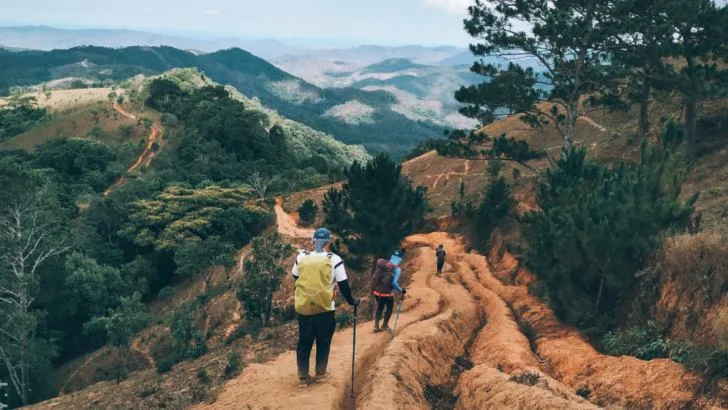
Varying your intensity will help you challenge yourself and see more results. Hiking at a moderate intensity will help you burn calories and improve your cardiovascular health. Hiking at a high intensity will help you build muscle and strength.
Varying your duration will help you build endurance and stay motivated. Hiking for short periods of time will help you improve your stamina. Hiking for longer periods of time will help you burn more calories and explore new places.
The benefits of hiking for overall health and fitness
In addition to building your glutes, hiking is also good for your overall health and fitness. Hiking can help you:
Lose weight: Hiking is an exceptional ally in your weight loss journey. As you venture along the scenic trails, your body becomes a calorie-burning machine. A moderate-intensity hike can torch up to 300 calories per hour, making it an effective and enjoyable way to shed unwanted pounds. The beauty of hiking lies in its simplicity; it allows you to connect with nature while simultaneously working towards your weight loss goals.

Reduce stress: Amidst the hustle and bustle of everyday life, hiking serves as a soothing balm for your soul. The serene ambiance of the outdoors, accompanied by the gentle rustle of leaves and the sweet melody of birdsong, helps to quiet the mind and alleviate stress. The fresh air and captivating scenery create a sanctuary where you can let go of worries and embrace tranquility, leaving you feeling rejuvenated and at peace.

Improve cardiovascular health: Your heart and lungs become the primary beneficiaries of hiking’s cardiovascular benefits. Engaging in regular hikes elevates your heart rate and promotes blood circulation throughout your body. As you traverse the trails, your heart strengthens, and your blood pressure and cholesterol levels may decrease. This dynamic activity becomes a cornerstone of maintaining a healthy heart and enhancing overall cardiovascular health.

Build muscle and strength: Hiking is more than just a cardio workout; it also stands as a fantastic way to build muscle and strength. Your legs, glutes, and core become active participants in every stride you take. The undulating terrain challenges your muscles, propelling them to grow stronger and more resilient. With each hike, your body evolves into a symbol of endurance and vitality.
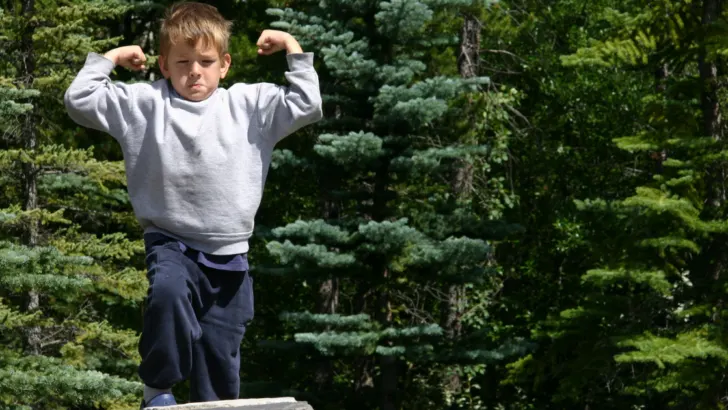
Improve balance and coordination: The ever-changing nature of hiking trails presents an opportunity to enhance your balance and coordination. As you navigate uneven terrain and varying inclines, your body adapts to the constant shifts, refining your sense of balance and coordination. This newfound harmony between mind and body strengthens your ability to move with grace and confidence.
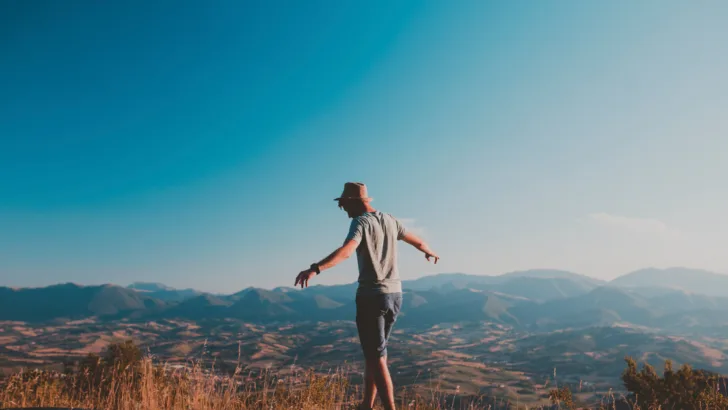
Increase flexibility: Hiking serves as a gateway to increased flexibility. As you traverse the trails, your muscles undergo a gentle stretching process, promoting flexibility throughout your body. Each step becomes a dance of fluidity, fostering suppleness within your muscles and joints. Embrace the sense of freedom that comes with enhanced flexibility, knowing that you are nurturing your body’s range of motion.
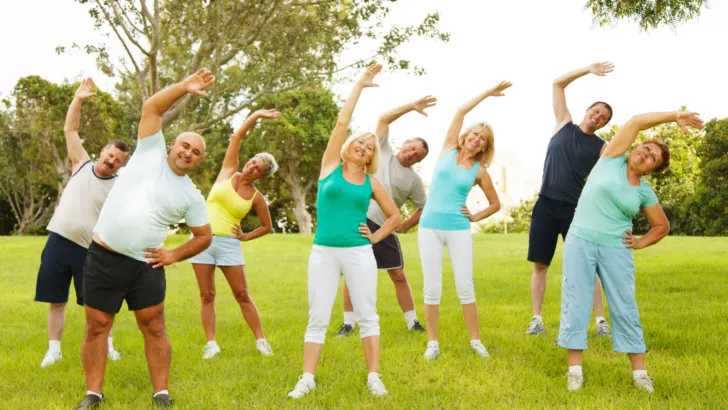
Enhance mood: The transformative power of hiking extends to your emotional well-being. Basking in the embrace of nature’s beauty, you discover a renewed sense of joy and contentment. The invigorating physical activity releases endorphins, which act as natural mood elevators, leaving you feeling happier and more vibrant. With hiking as your companion, the world becomes a canvas of positivity and delight.
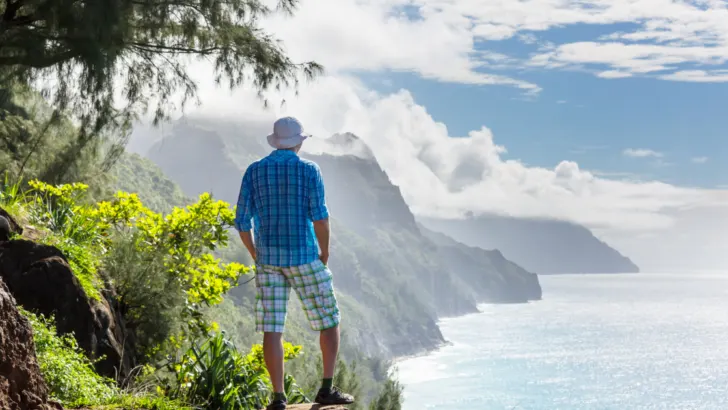
Boost energy levels: Step by step, hiking infuses your body with newfound energy. The invigorating outdoor experience awakens your senses and revitalizes your spirit. As you trek the trails, your body releases endorphins, infusing you with a sense of vitality and vigor. The cumulative effect of hiking on your energy levels is profound, empowering you to embrace life’s challenges with a newfound sense of zeal.

Hiking, a harmonious fusion of physical activity and nature’s beauty, bestows a treasure trove of benefits upon your mind, body, and soul. Whether you seek to lose weight, strengthen muscles, reduce stress, or embrace a sense of tranquility, hiking beckons as the perfect pathway to holistic well-being.
Tips for staying safe while hiking
Hiking can be a great way to enjoy the outdoors, but it’s important to stay safe. Here are a few tips:
- Wear proper footwear: A successful hiking adventure begins with the right foundation—proper footwear. Embrace the support and traction provided by hiking boots or trail running shoes. These essential companions safeguard your feet against uneven terrain and provide stability throughout your journey. With each step, you can tread confidently, knowing your footwear is a steadfast ally.
- Bring plenty of water: Amidst the beauty of the wilderness, it’s crucial to prioritize hydration. Dehydration poses a significant risk when hiking, especially in warm weather. To quench your body’s thirst and maintain optimal performance, ensure you carry an ample supply of water. Aim to drink at least 1 liter of water per hour, replenishing the vital fluid that fuels your exploration.
- Let someone know where you’re going: In the spirit of safety, inform a friend or family member about your hiking plans. Share the details of your intended route and the estimated time of your return. This simple yet essential gesture provides an extra layer of security, ensuring that someone is aware of your whereabouts in case of unforeseen circumstances.
- Check the weather forecast: Nature’s moods can be unpredictable, making it imperative to be informed about the weather conditions before embarking on your hike. Stay vigilant for any signs of rain or thunderstorms in the forecast. If adverse weather looms, it’s wise to postpone your hike to a safer time, preserving the sanctity of your outdoor adventure.
- Be aware of your surroundings: As you wander through nature’s embrace, stay attuned to your surroundings. Nature’s wonders may be accompanied by potential hazards, such as cliffs, loose rocks, and wildlife. By maintaining a vigilant eye and a cautious step, you ensure that your hiking experience remains enjoyable and free from unnecessary risks.
- Don’t hike alone: The beauty of the wilderness is magnified when shared with kindred spirits. If you venture into an unfamiliar area, it’s wise to journey with a friend or a group. The camaraderie of companionship adds an enriching dimension to your hike, while also providing an extra measure of safety and support.
- Pack the essentials: Just as an artist equips themselves with brushes and paint, a hiker prepares with essential tools. Beyond water and food, your backpack should contain a well-stocked first-aid kit to address minor injuries. A map and a compass become your navigational allies, guiding you through the intricate web of trails. With these essentials at your side, you venture forth confidently, equipped to embrace the unforeseen with grace and preparedness.
Embrace the art of hiking with mindfulness and preparation. Proper footwear paves the way for surefooted exploration, while ample water sustains your vitality throughout the journey. Empower yourself with knowledge and communication by informing someone of your plans and staying informed about the weather. Be present and aware of your surroundings, celebrating the beauty of nature while respecting its inherent hazards. Together with a trusted companion, share the magic of hiking, kindling bonds of friendship and safety. Lastly, pack your backpack with the essential tools of exploration—a first-aid kit, a map, and a compass—as you embark on a journey of self-discovery and awe-inspiring adventure “Is Hiking an Aerobic Exercise: A Clear Answer?“.
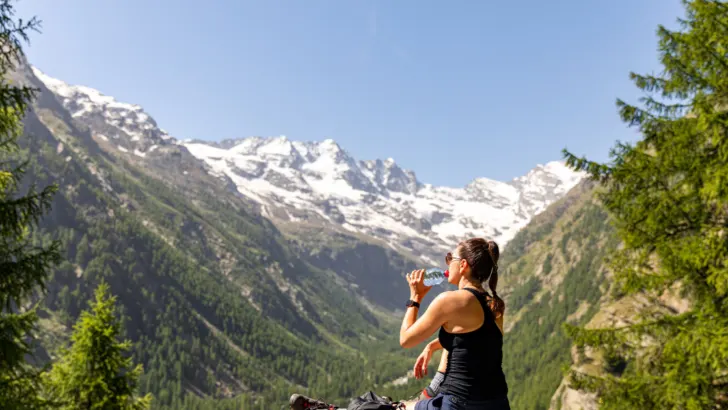
Does Hiking Build Glutes? Conclusion
After researching and analyzing the benefits of hiking for the glutes, I can confidently say that hiking is a great way to strengthen and tone your glute muscles. Hiking involves walking uphill, downhill, and over varied terrain, which requires your glutes to work harder than they would on a flat surface. This increased effort leads to increased strength, endurance, and tone over time.
Hiking is also a weight-bearing exercise, which means that it helps to build and maintain bone density. This is important for overall health, but especially for women as they age and start to lose bone mass. In addition to building bone density, hiking can also help to reduce the risk of injury by strengthening the glutes and stabilizing the pelvis.
It’s worth noting that while hiking is a great way to build and tone your glutes, it’s not a miracle cure. It’s important to combine hiking with other exercises that target the glutes, such as squats and lunges, for maximum results. Additionally, a healthy diet and lifestyle are important for overall health and fitness.
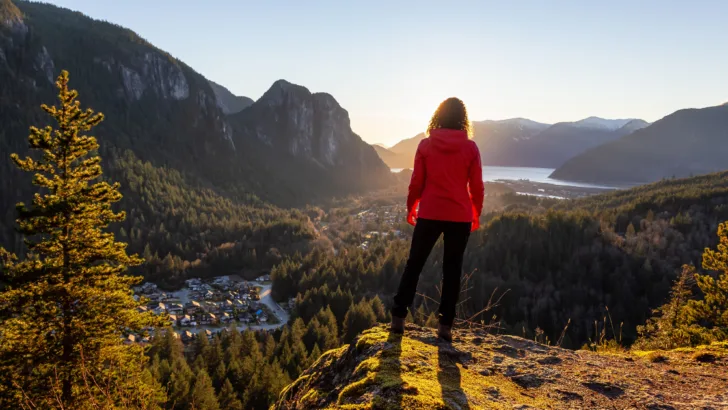
Overall, hiking is a fun and effective way to improve your glute strength and tone. Whether you’re a seasoned hiker or just starting out, adding hiking to your fitness routine can have a positive impact on your overall health and well-being.
Frequently Asked Questions
Can hiking help tone and strengthen your glutes?
Yes, hiking is a great way to tone and strengthen your glutes. Hiking involves walking uphill, downhill, and over varied terrain, which requires your glutes to work harder than they would on a flat surface. Additionally, hiking is a weight-bearing exercise, which means it can help increase bone density and reduce your risk of osteoporosis.
What are some exercises to specifically target and build the glutes?
Some exercises that can specifically target and build the glutes include squats, lunges, deadlifts, hip thrusts, and glute bridges. These exercises can be done with or without weights and can be modified to fit your fitness level.
Is hiking a good way to supplement a glute-building workout routine?
Yes, hiking can be a great way to supplement a glute-building workout routine. Hiking can provide a unique challenge to your glutes and lower body muscles and can help improve overall endurance and cardiovascular health.
What other benefits does hiking provide for overall lower body strength?
In addition to strengthening your glutes, hiking can also help improve overall lower body strength. Hiking can help improve balance and stability and can work your quadriceps, hamstrings, calves, and hip muscles.
How often should you hike to see results in your glutes?
The frequency of hiking required to see results in your glutes can vary depending on your fitness level, goals, and the intensity of your hikes. However, hiking at least 2-3 times per week can help you see noticeable improvements in your glutes and lower body strength over time.
Are there any precautions or tips to keep in mind when hiking for glute-building purposes?
When hiking for glute-building purposes, it’s important to start slow and gradually increase the intensity and duration of your hikes. It’s also important to wear proper footwear and clothing, stay hydrated, and listen to your body to avoid injury. Additionally, incorporating a warm-up and cool-down routine can help prevent muscle soreness and injury.
